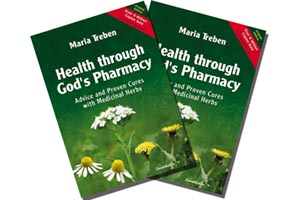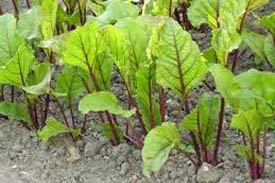Less Water…More Food. Part I
 I have spent 25 or so years puttering along with watering the vegetable garden. All of this time was spent teaching me Mother Nature’s intent of the interaction about the needs of plants and modern technology. Essentially this will be a long article with pictures to introduce you to use less water for a better garden. I have, within my scope, finally created a viable watering system that with modifications may meet your watering needs in this global, yes global droughts, to produce your own vegetables.
I have spent 25 or so years puttering along with watering the vegetable garden. All of this time was spent teaching me Mother Nature’s intent of the interaction about the needs of plants and modern technology. Essentially this will be a long article with pictures to introduce you to use less water for a better garden. I have, within my scope, finally created a viable watering system that with modifications may meet your watering needs in this global, yes global droughts, to produce your own vegetables.
In the beginning I knew nothing. However I am an experimenter more so concerned with knowledge to pass on to others. At this time in history we have enjoyed a remarkable 75 years or so of rain with bountiful harvests and supported the world population growth from about 3 billion people in 1970 to 7 billion today. Where there is food, there is a population explosion – A BUBBLE IN TIME. When the rains stop what is available will be more costly until we die out as many cultures in Meso-America did during the 500-year drought. Reference the Cliff Dwelling Indians of Moab Utah.
When I retired from the US Navy in 1980 we moved to this rural setting at 2500-foot elevation smack dab in the Appalachian low mountains. This is a rich area abundant in herbs and flora found nowhere else on this planet, save in Manchuria/China. I started my first garden in 1984 and everything burned up in the summer heat. I needed water besides rain. So I read what the Farm and Land Management experts wrote about. I needed about 7,000 gallons of water for my less than 10,000 sq. ft. garden, every 5 or so days.
My springhouse home water source could not supply but about 800 gallons in a 24-hour period. The creek, also drying up in the summers heat was 1500 feet down hill, and not a viable source of water. I needed a pond and after more consulting with the Government about pond construction I turned to my local neighbors who actually built ponds.
See my pond-building article.
My first pond was a run off from the elevation and woods behind me and I captured several thousand gallons of water. We used it for swimming and most important a reflecting pond with ducks, gold fish, frogs and general pond life. However I had to bring in backhoes and dig an underground pipeline from the pond to the garden and connected four hydrants.
My first experiment was “sprinkling”. The Government subsidizing major farmers uses this in crop circle watering, pumping out water from deep in the earth. My pond capture has a run off when full, and continues down to the creek, then to the river and eventually the sea.
The 1½ HP pump with a 1½” line delivers about 10 gallons a minute under good pressure for a 100’ run. All of these plastic pipes were buried under ground along with electric lines.
I found that the sprinkling system left fungus and a rise in ground humidity that fostered insect growth. Also the time factor in sprinkling was long and used excessive water that mostly was evaporated by the sun. Nighttime sprinkling just caused more blights. Some of this may be attributed to “pond” water vs.: underground aquifer, but I was using what was available at that time.
In a couple more years or so I switched to irrigation flooding. This was worse for the insect build up and if you walked in the garden you went to your knees in mud. The plants liked the irrigation, but it too was using thousands of gallons of water. Weeds really liked the flood and grew to biblical proportions in the blistering sun.
My next scheme involved burying 3 gallon buckets with tiny “weep” holes in the bottom in-between tomatoes and such. I was lugging water each day, but the toads liked to get in the buckets and hydrate. I had to place small climbing sticks in the buckets for them to get out and catch bugs in the evening. This was too much labor as I had to lug water for about 100 feet back and forth and the buckets were many. Bad Idea!
The “Big Dry” that hit the East Coast in 2002, and me especially…was NO WATER-NO RAIN, just dryness. The ever flowing creek dried up and the fish died. The pond just dried up as there was no flow into. I think a concrete or more modern plastic lined pond would have dried up too. It was scary. While all this was going on farmers, neighbors and the news media were heralding “End Days”; our spring was drying up too.
Our spring had been in existence obviously for thousands of years; native people used it, and since the 1700’s title on the land so did the white man. I HAD TO DRILL A WELL.
See my articles on well drilling and water supplies
You cannot use a well to irrigate a garden. The well pipe depth and width only holds so many gallons, and the fill up from the bottom may be quick or slow. No well water, except for the greenhouse of course.
My first experiment was in the Solar greenhouse building beds with a 6” slotted plastic leach bed pipes covered in a sock sold for the purpose of letting liquid out but sand from getting in. I found that this small experiment resulted in a dry topsoil layer with less bugs since bugs require moist soil for eggs to pupate to growth. Being an organic gardener I avoid toxic sprays. I started plants in cans and pots then transplanted to the greenhouse beds. The roots quickly sought out the water source under them and thrived.
So I then thought about expansion of the greenhouse concept and built my first “Hoop House” with underground leach line pipes with socks. To ensure a constant flow of water in the Hoop House beds I collect rainwater from the roof, guttered to the underground beds. This appeared to work well for the strawberries.
See my articles on Hoop Houses.
Besides the successful underground watering I also avoided rabbits, deer and terrapins from sampling my wares. I expanded and after three years built my second Hoop House, 10’x20’ with underground watering. This greenhouse has been educational for me and I now use it exclusively for squashes and pumpkins, which exclude hungry groundhogs AKA: Woodchucks. Plus I can use the well water for limited watering, as necessary as the hoop of plastic is inadequate to capture enough rainwater run off. I needed a storage tank.
My neighbor had several heavy-duty plastic tanks used for tree farming “green ups” and I traded for one 500-gallon square tank. I collect rainwater in this also and can run a pumped ponds water fill up from the hydrant. This is not a well water fill up.
Expanding on this idea I guttered the barn and caught the runoff from the metal roof. A side benefit: I was not rotting the locust posts of the pole barn but getting the water running to a used 3,000-gallon tank I buried in the ground. This came as an agricultural tree-watering tank used in farming that sat on a truck bed. I also bought a 2,000-gallon tank and partially buried this in the upper part of my garden for gravity feed watering. This took another 3 years.
I now had a pond, pumping system and three back up storage tanks. I was still in a quandary about watering the garden in the usual summer draught so I had to experiment more.
Next week we will look at Part of the water flows and master plans yet to be accomplished, but a hard look at the tested underground piping system you might want to install for your food production interests. Pictures included.
Best in Gardening, God Bless,
Old Timer
COPYRIGHT: 2012, Back2theLand.com, Mark Steel, all rights reserved.



